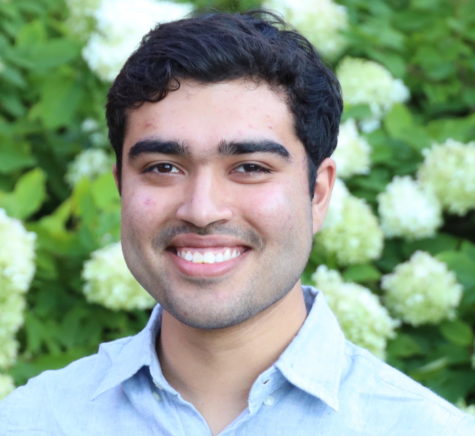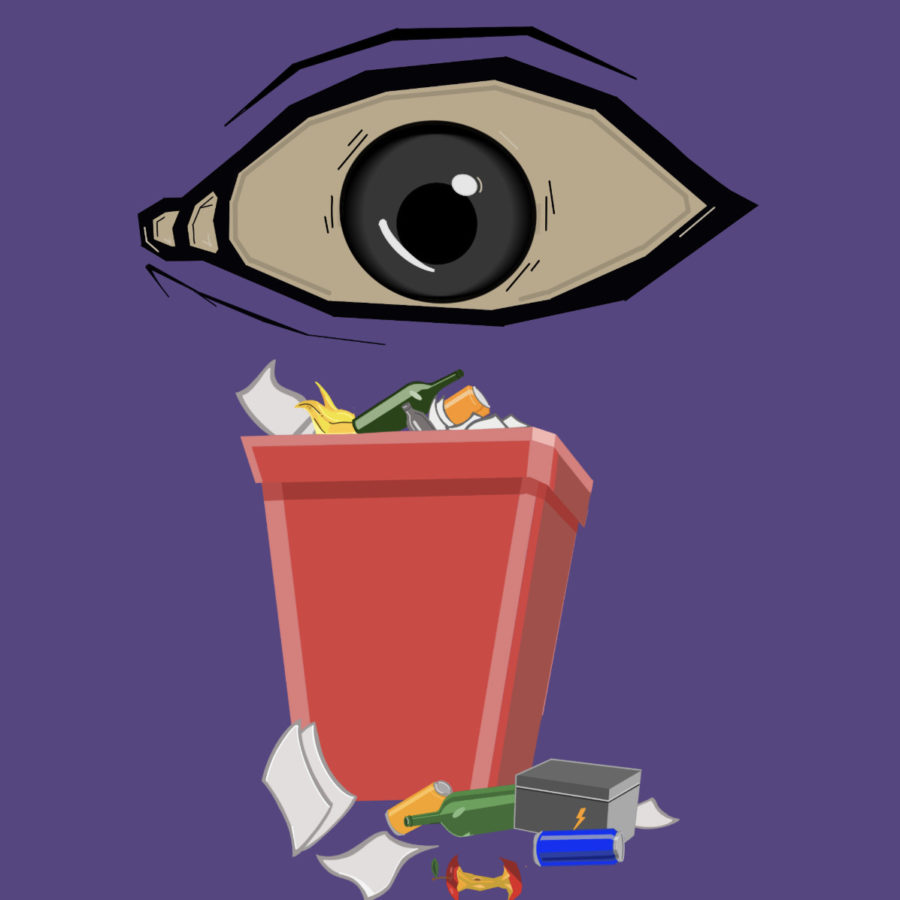CWRU partners with Cleveland to fight illegal trash dumping with AI
You might see some trash being dumped around campus later this year. But don’t worry—it’s all for science and civic duty!
Illegal garbage dumping is a problem that plagues most cities—with Cleveland being no exception. Litter, yard waste, abandoned tires and garbage in alleys are increasingly common sights across the city with unsecured dumpsters and trash cans exacerbating the issue. Though illegal dumping is detrimental to the environment and cleanliness of a city, it can be hard to enforce laws surrounding the issue due to difficulties in actually finding transgressors—people generally don’t stick around after they dump their trash behind illegally. As technology continues to progress and become more integrated with our lives, however, that may change.
When Justin Bibb was elected mayor of Cleveland in November 2021, his campaign focused on approaching Cleveland’s age-old problems in new ways. As part of his pitch, Bibb advocated for modernizing City Hall operations and using technology to use government resources more efficiently. Now mayor for almost a year, his administration has slowly seen more “smart city” solutions being adopted by the city, including a snow plow tracker that citizens can use, modernized parking meters and a gunshot detection system that works by placing microphones on rooftops and utility poles that listen for the sounds of firing weapons. Case Western Reserve University may be part of the administration’s push to use technology to combat our city’s issues: specifically illegal dumping.
On Sept. 10, Cleveland City Council formally passed an ordinance to allow the city to work with CWRU and Cleveland State University in developing an artificial intelligence model to recognize illegal dumping using security footage.
The two universities partnered together on a project called the Internet of Things (IoT) Collaborative, which will be working on this initiative. The IoT Collaborative came about after Dr. Kenneth Loparo, who was then the department chair of CWRU’s Department of Electrical Engineering and Computer Science—which has since transitioned into the Department of Electrical, Computer and Systems Engineering—decided to pursue a research focus in the “internet of things.” Working with then-CWRU President Barbara Snyder, Loparo approached the Cleveland Foundation for funding, which noted that CSU was having similar conversations with them and referred the two institutions to work together. The IoT Collaborative officially began work in 2020 to pursue research into how technology can benefit the local Cleveland community.
“We think about the devices, sensors … and actuators—things that move that can be connected to the internet now at very low cost,” IoT Collaborative co-Executive Director Nick Barendt explained. Barendt is also an adjunct professor at the Case School of Engineering, teaching a course on the internet of things. “So we consider things like smart watches, fitness trackers—even your cell phone really is an ‘internet of things’ device, packed with sensors and connected to Wi-Fi or cellular networks. We have other projects using other sorts of wireless modalities for communications.”
The “internet of things” is meant to study how the information captured by the many smart devices around us can be used to supplement our businesses, governments and lives as a whole. The IoT Collaborative thus became the perfect group to pursue further study on ways the city could use technology to tackle issues like illegal dumping.
Roy Fernando, Bibb’s chief innovation and technology officer, initially approached the IoT Collaborative to discuss projects the city could start to explore using “smart city” technologies. However, they later found illegal dumping could be feasibly tackled using AI models.
“We’ve been looking for opportunities to engage with the city on some of these topic areas,” Barendt said. “So we’ve been enthused by the Bibb administration and their interest in how to deploy technology … to make city operations more effective … The topic of illegal dumping came up as something that was really being a nuisance—to put it kindly—to residents and to the city operations.”
Though the city is already using some cameras to track illegal dumping, the current system has many issues and is rather crude. Using basic tracking, the cameras often lead to many false positives that have to be manually reviewed by humans each time. The system proposed by the IoT Collaborative would be far more advanced and hopefully more accurate in identifying true illegal dumping and tracking transgressors. The project will be worked on by CWRU and CSU faculty and students, and will start off by testing with a proof-of-concept controlled-environment on campus.
“We’ll probably be putting together a demo facility of some form on [CWRU’s] campus such that we can move boxes or bags of simulated trash into the field of view,” Barendt said. “It’s a way to build a sandbox. If we do it on our campus, things are a little more straightforward. We don’t have to worry about other people we’re disturbing. We can semi-control the environment while we’re developing the proof-of-concept.”
So yes, there will be fake trash set up around campus. Work on the project will likely begin in late 2022, with hopes of delivering some data to the city of Cleveland in early 2023. Dr. An Wang, an AI researcher and a professor in the Department of Computer & Data Sciences, will be leading the project as the primary faculty member on the CWRU side. Additionally, Dr. Brian Ray, a faculty member at CSU, will be working to ensure the project adheres to principles of digital privacy and civil liberties.
Though the concept of “smart cities” and use of technology to track more aspects of our lives raises questions about the increase in surveillance, many believe that it can be a powerful tool to improve the quality of life for the citizenry by helping residents deal with issues like traffic, resource use and environmental health.
“How do we help cities make the best use of their operating dollars, to deliver services to their residents?” Barendt asked. “If there are ways we can do that, from automated tracking of assets, vehicles, equipment and things like that … that can be a win.”

Shreyas (he/him) is a fourth-year student majoring in biology and philosophy. If he isn't yammering to you about how great "Pet Sounds" is or making bad...


